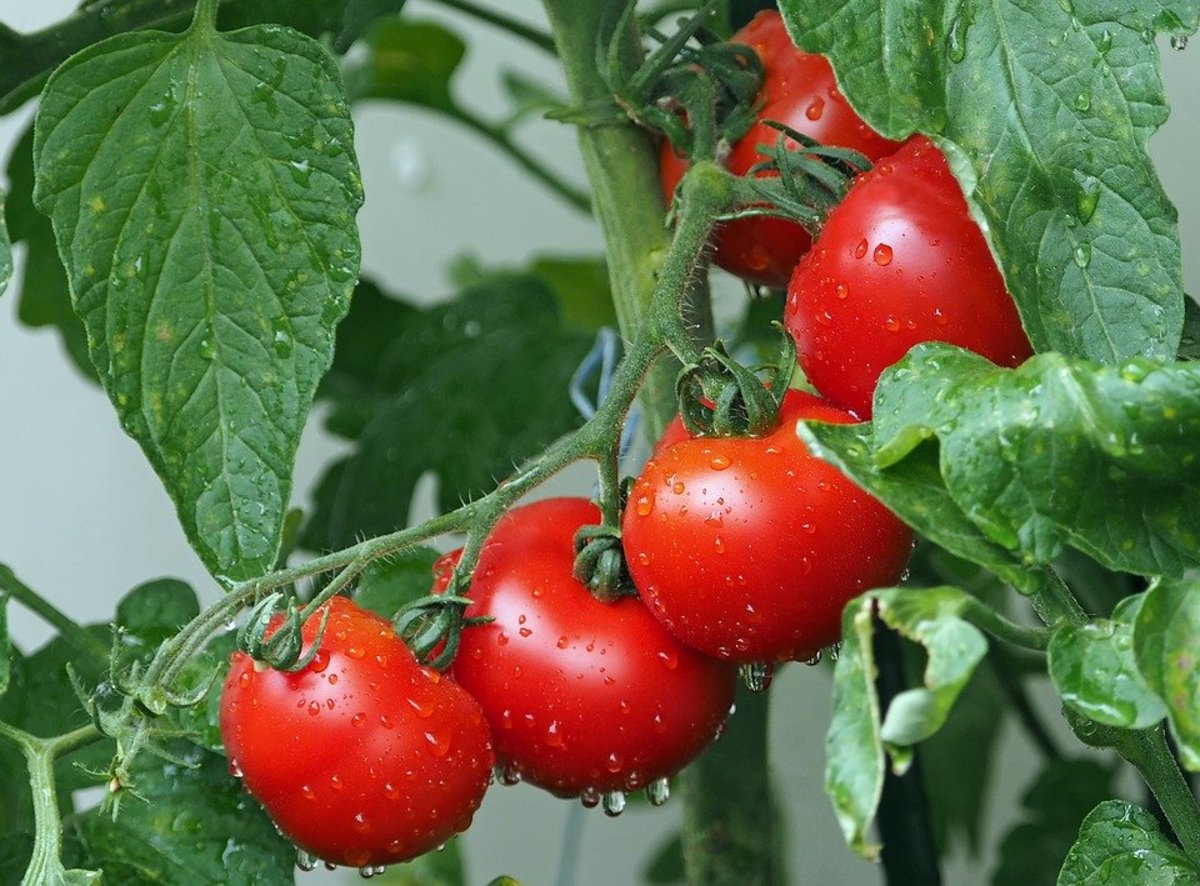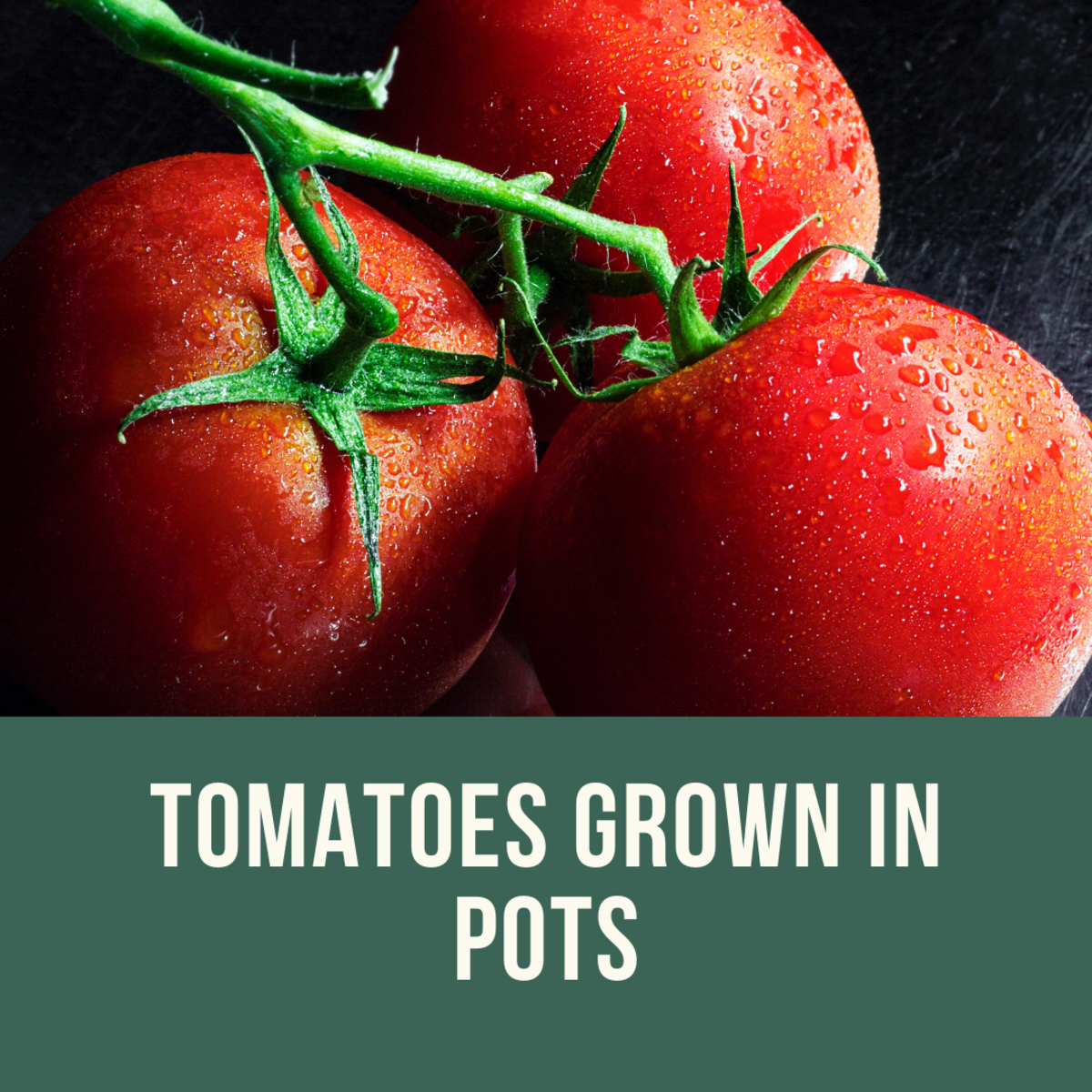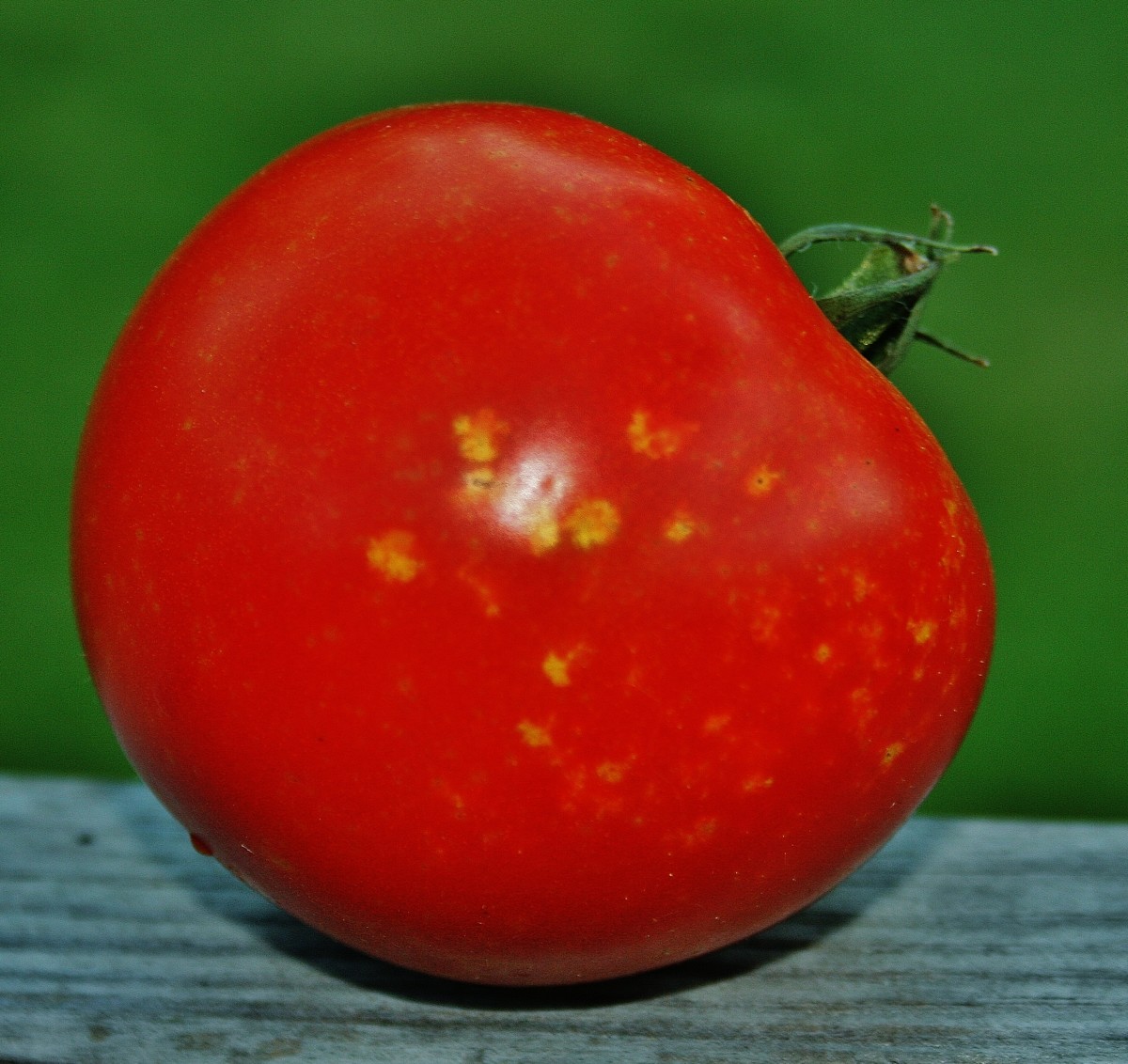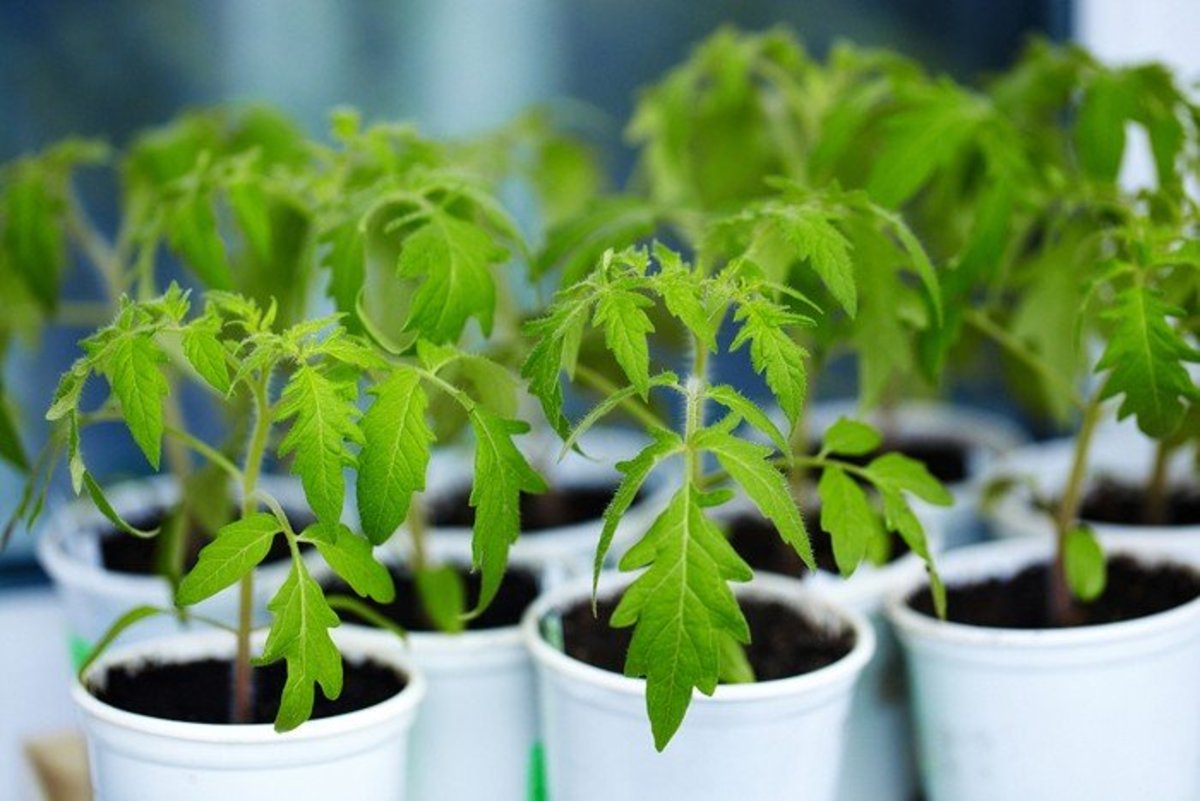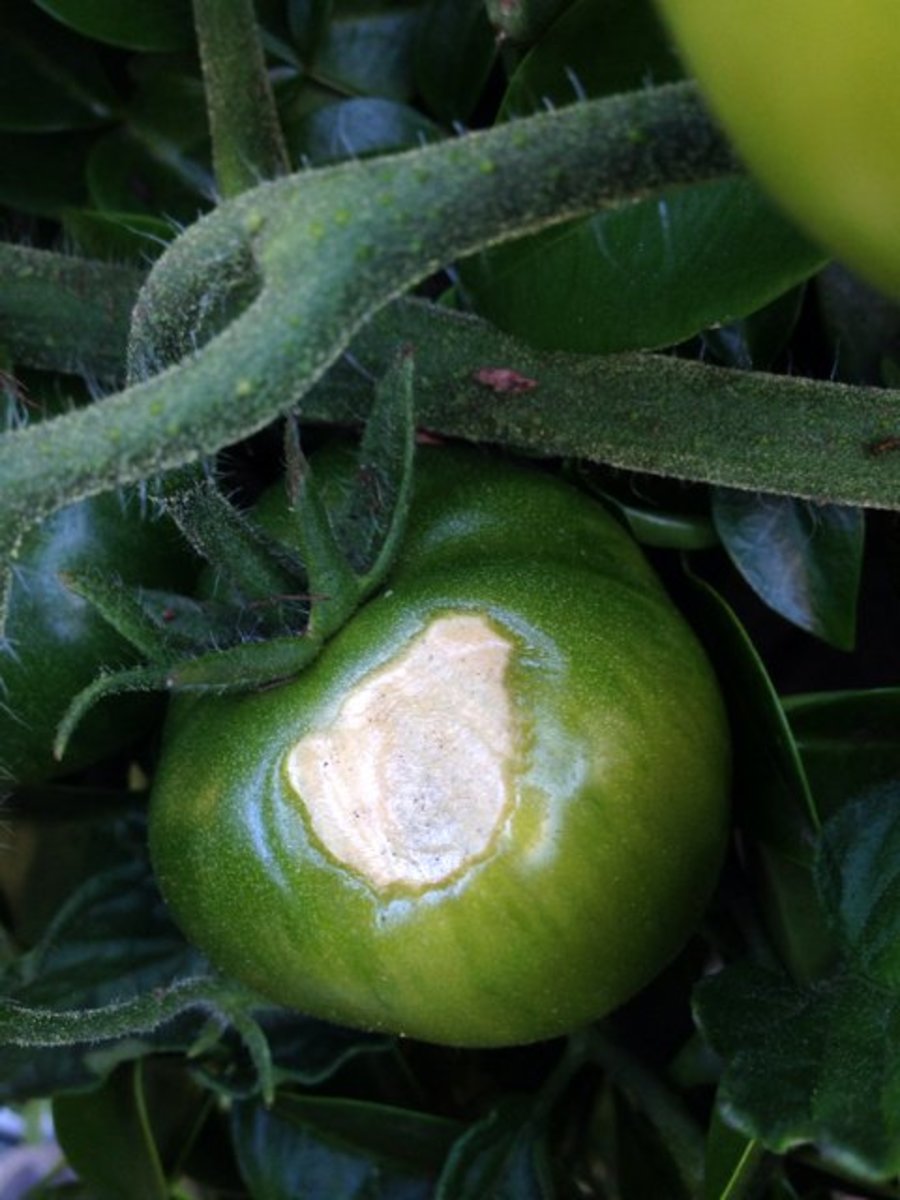- HubPages»
- Home and Garden»
- Gardening»
- Planting Vegetables
Build The Ultimate Tomato Cage Using A 3D Lattice Design
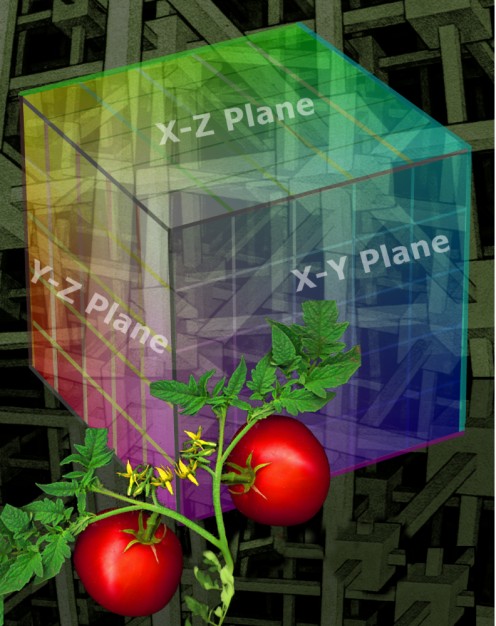
The Idea
Envision a cylinder, 60 inches tall and 30 inches in diameter, sitting upright on the ground. Imagine dividing the volume of this cylinder into cubes measuring 6 by 6 by 6 inches. Visualize the edges of these cubes as rigid wires, and the rest of the volume as empty space. This is a three-dimensional wire lattice shaped like a cylinder – the IDEAL model of my proposed "ultimate tomato cage".
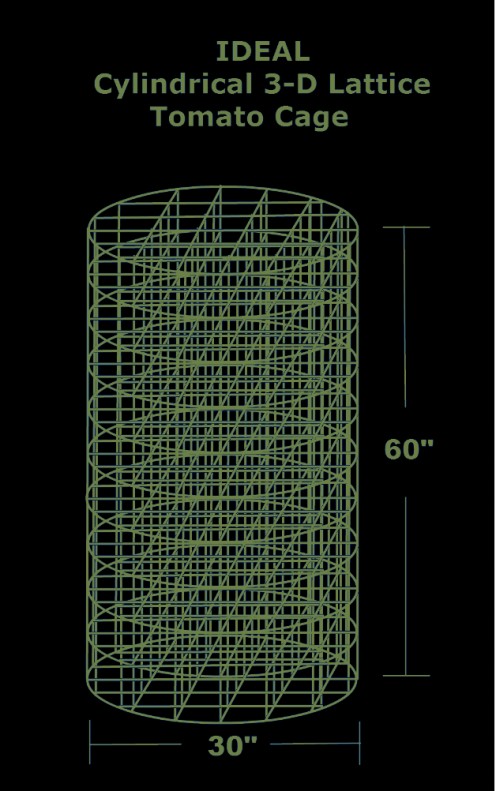
The IDEAL
Such a cylinder could serve as a rigid, 3-D-lattice trellis that provided:
- ample space for light, air, and rain to enter,
- ample room for vines to grow,
- ample wires where growing vines could find support spontaneously in all three spatial planes,
- ample clearance for hands to reach into any part of the cylinder's volume.
Beyond Standard Remesh Tomato Cages
If you search the Internet, you can find numerous instructional articles and videos describing how to build a homemade tomato cage with heavy-gauge wire mesh used in reinforcing concrete. This reinforcing mesh is logically called "remesh". As you can see from the many instructional resources online, you roll a piece of remesh into a cylinder that sits over a tomato plant as the plant's support system (like an exoskeleton).
Standard Remesh Tomato Cage
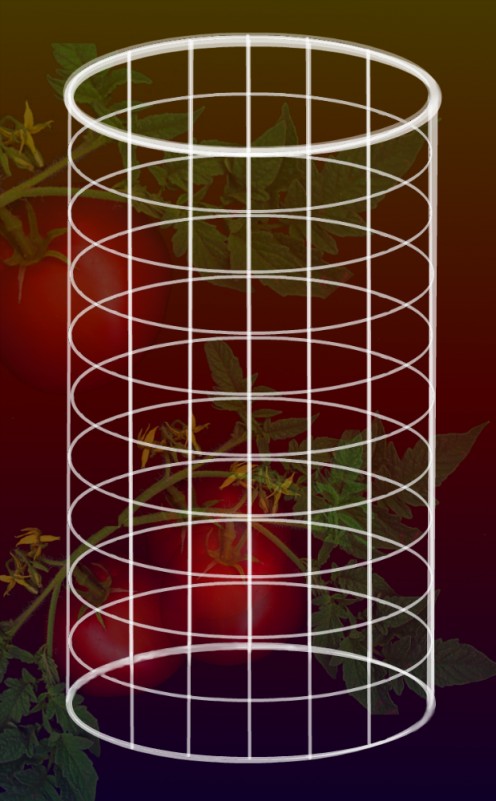
A standard remesh tomato cage has a 6" X 6" support lattice on the SURFACE of the defining cylinder. I want to go a step further (or a dimension deeper) by extending this support to a 6" X 6" X 6" lattice throughout the VOLUME of the defining cylinder. Easily constructing my ideal 3-D lattice cage, however, is NOT possible. Notice, I say, "easily". Constructing such an ideal would be too laborious and costly for most people, probably involving welding or interweaving numerous wires to sculpt the full 6" X 6" X 6" wire lattice. Furthermore, this ideal might be overkill.
Do we really need every one of those wires (shown in the ideal design) to produce a practical version of a cylindrical 3-D lattice? My best judgment tells me that the answer is "no" – we need ONLY a portion of a 3-D lattice to provide a 3-D lattice effect. We, thus, can use the ideal to get to the real or the practical.
Enhanced Remesh Tomato Cage
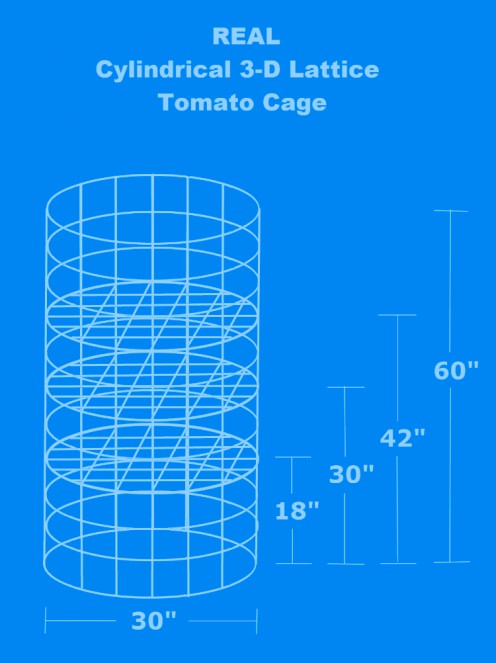
The PRACTICAL Design
The way I suggest creating enhanced support using a 3-D lattice ideal is to make and attach round remesh shelves at selected heights inside the remesh cylinder. In my drawing, I suggest shelves at three heights – 18", 30", and 42" above ground level.
Maybe one shelf would suffice, or two. I have NOT built the cage yet, and so I have not had the opportunity to experiment with this particular question.
Three shelves would provide two one-foot thick support cells near the center height of the tomato plant, and two other, larger support cells (one below and one above center height). The effect would be to add a full matrix of wires in the X-Z planes at these heights, while adding a more widely spaced matrix of wires in the X-Y and Y-Z planes throughout the entire height of the cylinder.
The wire shelves, thus, would serve a dual function:
- to provide vertical guide holes all the way from the central axis to the perimeter of the plant, holding vines closer to the central axis (hence more vertically) as they grow,
- to provide horizontal surfaces onto which draping vines might rest, keeping their fruit from touching the ground.
How To Cut Those Shelves
I envision using a cardboard pattern, laid onto a length of remesh, whose outline I mark with chalk to indicate the perimeter where I allow extra distance, as I cut with bolt cutters, to make prongs that attach the shelves. After cutting, I first bend the attaching prongs at a 90-degree angle upward, so that I can slide the shelf inside the cylinder, and then, at the desired height, I bend the prongs down to secure the shelf at this height.
Again, as of this writing (September 2014), I have NOT made the cage. At this stage, I am merely suggesting the design. I currently find that the cost of using remesh is too high, because it only comes in rolls of 150-feet at $107+tax. Like many home vegetable gardeners, I do NOT need 150 feet. At most, I need one third of this length.


